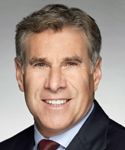Independents: It's up to you, says Cardinal Health CEO
George Barrett of Cardinal Health discusses the future of independent pharmacists.

Reclaiming market share
For quite some time there has been competitive pressure on prescriptions. That is true across all market channels, driven by system costs and pressures on reimbursement. One of the challenges that independents face is margin pressure and intense competition from chains, mass merchants, and an assortment of places. When we look at the tools the independent uses to compete, it is really about providing very individualized patient care. We focus a great deal of our attention on enabling pharmacists to devote more time to patient care.
Each organization has to find its own way of competing most effectively. It is very important to find revenue streams beyond the traditional filling of prescriptions. For independents, personalized care is a critical aspect. That requires a segmentation of their market, an understanding of their own location and demographics, the community and the neighborhood in which they compete, and finding a way to compete uniquely.
We partner with independent pharmacies to try to determine which niche might be most effective for them. We conduct research to determine what services might be required for the demographic of their community. Is there a large number of senior citizens? Is there a nursing home that might be looking for a consultant pharmacy?
I'd love to tell you that there's a one-answer-fits-all, but I don't believe it. It is really about each independent pharmacy serving its own business, finding its own strategy, its own market, and its own ways to compete most effectively. But at the heart is the ability to deliver personalized care.
Information technology
Pharmacists need to leverage information technology to reduce costs, increase efficiency, and increase revenue. They should adopt specific technology, so they have time to deliver more patient care. As an example, having the right inventory management tools allows the pharmacist to be out front with patients and not behind the counter focusing on optimization of product.
E-prescribing is a tool that can help improve efficiency as well as safety. The forces for change are powerful enough that we will see adoption both by providers and dispensers. Independents should get on board. Those are the kinds of technologies that free up time, allowing pharmacists to deliver the kinds of cognitive services that make them so valuable in the system.
Whither health reform?
The forces that were driving the demand for healthcare reform have not changed. We still have tens of millions of people who cannot access healthcare, we have a system that is struggling with costs, we have an aging population that is going to continue to drive demand, and a push legislatively to bring more people into the system.
There are two critical parts to the equation on healthcare reform or healthcare evolution:
1) The likelihood of more people in the system, which is both a demographic force as well as a legislative push.
2) The other is increased attention on costs.
Those two forces will require continued focus on efficiency and the use of tools in the system to free the deliverers of care, including pharmacists.
Whether we have a legislative fix in the short term or not, those are systemic forces that we need to consider.